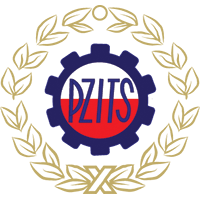CIEPŁOWNICTWO – DISTRICT HEATING ● OGRZEWNICTWO – HEATING
Europejski „zielony ład” na rynku ciepła i chłodu. (DOI: 10.15199/9.2020.12.1)
A European „Green Deal” in the Heat and Cold Market ‒ Małgorzata Niestępska. . . . . . . . . . . . . . 2
Słowa kluczowe: zielony ład, ciepło, chłód, odnawialne źródła energii
Streszczenie
Polska zadeklarowała w 2020 r. przejęcie do realizacji bardzo ambitnego celu osiągnięcia 28,4 % udziału odnawialnych źródeł energii (OZE) w zużyciu końcowym ciepła i chłodu brutto do 2030r. Zwiększenie udziału OZE w rynku ciepła ma być realizowane przez koncesjonowane przedsiębiorstwa ciepłownicze. Przyjęty cel wynika z konieczności implementacji polityki klimatycznej Unii Europejskiej wdrażanej między innymi dyrektywą w sprawie odnawialnych źródeł energii tzw. „dyrektywy RED II”. W myśl przyjętej przez Unię polityki przyszłość mają tylko gospodarki oparte o wiedzę i inwestujące w najnowsze technologie ograniczające presję środowiskową. Dla Polski, borykającej się z problemem smogu, jest to właściwy kierunek zmian. Istotny wkład w realizację tej strategii ma transformacja sektora energetycznego stanowiąca element Europejskiego Zielonego Ładu. Unia Europejska zgodnie z przyjętymi założeniami chce być do 2050% kontynentem neutralnym klimatycznie. Dla Polskiego rynku ciepła to duże wyzwanie. Problemem w tym kontekście jest niski poziom udziału odnawialnych źródeł energii w polskim ciepłownictwie, stagnacja w przyroście źródeł OZE w ciepłownictwie w ostatnich latach i dominacja paliwa węglowego. Realizacja przyjętego celu w postaci zwiększenia udziału OZE w cieple i chłodzie wymaga bardzo dużych nakładów inwestycyjnych w przedsiębiorstwach, które jednocześnie muszą rozliczać się z drożejących uprawnień do emisji dwutlenku węgla. Należy jednak zauważyć, że Polska nie jest wyjątkową „czarną owcą”, która musi zmierzyć się z wyzwanie OZE w cieple i chłodzie. Wiele krajów świata, skoncentrowanych dotąd na energii elektrycznej dopiero zaczyna dostrzegać potrzebę zmian także w obszarze ciepła i chłodu. Aby ocenić na ile realne są cele zwiększenia udziału OZE w końcowym zużyciu ciepła i chłodu zapisane w Krajowym Planie na rzecz energii i klimatu konieczne jest spojrzenie wstecz jak również spojrzenie z perspektywy doświadczeń innych krajów. Tych, które charakteryzuje największy udział OZE w ciepłownictwie i chłodnictwie oraz tych, w których nadal dominują paliwa kopalne.
Keywords: green deal, charging, heat, cold, renewable energy sources
Abstract
In 2020, Poland declared to assume the very ambitious goal of achieving a 28.4% share of renewable energy sources (RES) in the final consumption of gross heat and cold by 2030. Increasing the share of renewable energy sources in the heat market is to be implemented by licensed heating companies. The adopted goal results from the necessity to implement the European Union’s climate policy implemented, inter alia, by the directive on renewable energy sources, the so-called „RED II Directive”. According to the policy adopted by the Union, only economies based on knowledge and investing in the latest technologies reducing environmental pressure have a future. For Poland, which has to face with the atmospheric pollutants from burning fuel , this is the right direction of change. A significant contribution to the implementation of this strategy is the transformation of the energy sector as part of the European Green Deal. According to the adopted assumptions, the European Union wants to be a climate neutral continent by 2050%. It is a big challenge for the Polish heat market. The problem in this context is the low share of renewable energy sources in Polish heating, stagnation in the growth of renewable energy sources in heating in recent years and the dominance of coal fuel. The implementation of the adopted goal in the form of increasing the share of renewable energy sources in heat and cold requires very large investment outlays in enterprises, which at the same time have to account for more expensive carbon dioxide emission allowances. It should be noted, however, that Poland is not a unique „black sheep” that has to face the challenge of renewable energy in warm and cold. Many countries in the world, so far focused on electricity, are just beginning to notice the need for changes also in the area of heat and cooling. In order to assess how realistic are the goals of increasing the share of renewable energy sources in the final heat and cold consumption set out in the National Energy and Climate Plan, it is necessary to look back as well as from the perspective of the experiences of other countries. Those with the highest share of renewable energy in heating and cooling, and those still dominated by fossil fuels.
Proces spalania paliw stałych. (DOI: 10.15199/9.2020.12.2)
Combustion Process of Solid Fuels ‒ Grzegorz Ojczyk. . . 7
Słowa kluczowe: paliwa stałe, węgiel kamienny, biopaliwa
Streszczenie:
W Polsce najczęściej spalanym paliwem jest węgiel kamienny. Węgiel kamienny traci na znaczeniu na rzecz innych źródeł energii w tym biopaliw stałych. Procesy występujące podczas spalania paliw stałych są podobne. Porównanie spalania węgla i drewna może być przydatne przy konstruowaniu nowej generacji automatycznych kotłów na biopaliwa stałe. Przedmiotem artykułu jest omówienie podstawowych przemian i procesów zachodzących w paliwie podczas spalania takich jak suszenie, zgazowanie i spalanie.
Keywords: solid fuels, coal, biofuels
Abstract:
In Poland, coal is the most frequently burnt fuel. Hard coal is losing importance to other energy sources, including solid biofuels. The processes involved in the combustion of solid fuels are similar. The comparison of coal and wood combustion can be useful when designing a new generation of automatic solid biofuel boilers. The subject of the article is a discussion of the basic changes and processes in the fuel during combustion, such as drying, gasification and combustion.
Procesy inwestycyjne dotyczące energetyki odnawialnej. (DOI: 10.15199/9.2020.12.3)
Investment Processes in Renewable Energy ‒ Mariusz Adamski, Jakub Magnuszewski. . . . . . . . . . . . . . . . . . . . . . . . . . . . 10
Słowa kluczowe: przygotowaniem inwestycji, energetyka odnawialna, biopaliwa, bilans cieplny, warunki przyłączenia do sieci cieplnej oraz energetycznej
Streszczenie
W artykule przedstawiono zagadnienia związane z przygotowaniem inwestycji dotyczących energetyki odnawialnej ‒ wybór lokalizacji, biopaliwa, technologii, sporządzanie bilansu cieplnego oraz uzgodnienie warunków przyłączenia do sieci cieplnej oraz energetycznej.
Keywords: preparation of investments, renewable energy, biofuel, heat balance, conditions for connection to the heat and power network
Abstract
The article presents issues related to the preparation of investments related to renewable energy ‒ selection of a location, biofuel, technology, preparation of a heat balance and agreement on the conditions for connection to the heat and power network.
WENTYLACJA ● KLIMATYZACJA – VENTILATION ● AIR-CONDITIONING
Przegląd błędów projektowych, wykonawczych i eksploatacyjnych w kontekście efektywności pracy systemu wentylacji i jakości dostarczanego powietrza. (DOI: 10.15199/9.2010.12.4)
Review of the Most Popular Design, Implementation and ¬Operational Errors in the Context of the Efficiency of the Ventilation System and the Quality Of the Supplied Air ‒ Marek Borowski, Bernadetta Ryba, Klaudia Zwolińska. . . . . . . . . . . . . . . . . . . . . . . . . . . . . . . . . . . . . 18
Słowa kluczowe: wentylacja mechaniczna, błędy wykonawcze instalacji wentylacji, błędy eksploatacyjne, czystość instalacji, jakość powietrza, efektywność wentylacji
Streszczenie
Głównym zadaniem systemu wentylacji w obiektach jest zapewnienie komfortu termicznego użytkowników. W związku z wydłużeniem czasu, który człowiek przez całe swoje życia spędza w budynkach, jest to szczególnie istotne zagadnienie. Skuteczna wymiana powietrza jest zatem niezbędna, a jej realizacja możliwa jest dzięki właściwie zaprojektowanym a także wykonanym i eksploatowanym instalacjom. Istnieje wiele przyczyn niewłaściwie działających systemów wentylacji, które wynikać mogą zarówno z niewiedzy, jak też z pośpiechu w wykonaniu, czy też ograniczania kosztów na etapie montażu elementów instalacji.
W artykule przedstawiono przykładowe błędy zarówno wykonawcze, jak i eksploatacyjne, z jakimi autorzy zetknęli się w trakcie realizacji inwestycji. W artykule szczególną uwagę zwrócono na negatywny wpływ takich błędów zarówno w kontekście komfortu użytkowników, jak i efektywności działania całego systemu. Wśród poruszonych zagadnień uwzględniono także wpływ czystości poszczególnych elementów instalacji na energochłonność systemów wentylacyjno-klimatyzacyjnych oraz parametry powietrza w pomieszczeniach.
Keywords: mechanical ventilation, installation errors of the ventilation system, operational errors, installation cleanliness, air quality, ventilation efficiency
Abstract
The main task of the ventilation system in buildings is to ensure the comfort of users. Due to the extension of the time that people spend in buildings, this is a particularly important issue. Effective air exchange is therefore essential, and its implementation is possible thanks to properly designed as well as made and operated installations. There are many reasons for inadequate ventilation systems, which can result from ignorance as well as rush or cost reduction at the installation stage.
The analysis presented in the article includes examples of errors, both execution, and operation, which the authors had the opportunity to encounter during the investment implementation. The article focuses on the negative impact of such errors both in terms of user comfort and efficiency of the entire system. The issues discussed also included the impact of the cleanliness of individual elements of the installation on the energy consumption of ventilation and air-conditioning systems and indoor air quality.
Systemy filtracji powietrza. Część 1. Klimatyzacja. (DOI: 10.15199/9.2020.12.5)
Air Filration systems. Part 1. Air conditioning systems ‒ Demis Pandelidis, Anna Pacak. . . . . 25
Słowa kluczowe: filtracja powietrza, wentylacja, klimatyzacja
Streszczenie
W artykule przedstawiono przegląd rozwiązań technologii filtracji powietrza w systemach wentylacyjnych i klimatyzacyjnych. W pierwszej części artykułu przedstawione zostaną rozwiązania filtrów stosowanych w domowych jednostkach klimatyzacyjnych, w drugiej części artykułu zostaną opisane filtry stosowane w centralach wentylacyjnych wykorzystywanych w systemach wentylacji mechanicznej.
Keywords: air filtration, ventilation air coniditioning
Abstract
The article presented a review of different air filtration technologies for ventilation and air conditioning systems. First part of the article discusses the solutions used in residential air conditioners, the second part is focused on filtration systems in air handling units used for mechanical ventilation.
Urządzenia do przepływu powietrza montowane w przegrodach zewnętrznych. (DOI: 10.15199/9.2020.12.6)
Internally Mounted Air Transfer Devices ‒ Barbara Pietruszka, Marta Malec. . . . . . . . . . . . . . . . .31
Słowa kluczowe: urządzenia do przepływu powietrza, nawiewniki powietrza zewnętrznego do pomieszczeń, wentylacja, przepływ nominalny
Streszczenie
Nawiewniki powietrza zewnętrznego do pomieszczeń to niezbędny element instalacji wentylacji. Montuje się je w budynkach z wentylacją grawitacyjną, mechaniczną wywiewną lub hybrydową. Źle działająca wentylacja wpływa na samopoczucie użytkowników budynku, a także destrukcyjnie na sam budynek, doprowadzając do zawilgocenia ścian i rozwoju pleśni. Poprawnie dobrane miejsca do montażu nawiewników będą także miały wpływ na prawidłowe działanie całej instalacji wentylacji w budynku. Ze względu na sposób regulacji przepływu powietrza przez nawiewnik wyróżniamy nawiewniki o regulowanym i nieregulowanym przepływie. Urządzenia o regulowanym przepływie to nawiewniki o regulacji ręcznej i automatycznej. Wśród nawiewników o regulacji automatycznej mamy głównie nawiewniki ciśnieniowe i higrosterowane. Oferowane na rynku nawiewniki są na tyle zróżnicowane, że bez większych problemów można wybrać odpowiedni typ do danego zastosowania.
Keywords: air flow devices, outdoor air transfer devices, ventilation, nominal flow rate
Abstract
Outdoor air transfer devices are an indispensable element of the ventilation system. They are installed in buildings with gravity, mechanical exhaust or hybrid ventilation. Poorly functioning ventilation affects the well-being of building users, as well as destructively on the building walls, leading to damp walls and mold growth. Well-chosen places for the installation of the air transfer devices will also affect the proper operation of the entire ventilation system in the building. Due to the method of regulating the air flow through the transfer device, we distinguish air transfer devices with regulated and non-regulated air flow rate. Controlled flow air transfer devices are devices with manual and automatic regulation. Among the automatically regulated air transfer devices, we mainly have pressure and humidity controlled devices. The air transfer devices offered on the market are different that you can choose the right type for a given application without major problems
Czy w Polsce jest szansa na wykorzystanie ciepła systemowego do wytwarzania chłodu na potrzeby klimatyzacji? Część 1. (DOI: 10.15199/9.2020.12.7)
Is There a Chance to Use System Heat in Poland to Produce Cold for Air Conditioning? Part 1 ‒ Marian Rubik. . . . .. . . . . . . . . . . . . . . . . . . . . . . . 34
Słowa kluczowe: poligeneracja, trójgeneracja, chłodziarka absorpcyjna, wskaźnik zużycia energii pierwotnej, system chłodzenia pośredni i bezpośredni
Streszczenie
W artykule opisano różne metody wytwarzania nośników energii na potrzeby obiektów budowlanych. Omówiono źródła zdecentralizowane (rozproszone) oraz układy scentralizowane, w których do produkcji wody lodowej na potrzeby klimatyzacji obiektów wykorzystano, niedociążone w lecie, miejskie systemy ciepłownicze. Opisano konieczne modyfikacje warunków eksploatacji systemów ciepłowniczych oraz graniczną, minimalną wartość zapotrzebowania na moc chłodniczą zapewniające energetyczną i ekologiczną efektywność eksploatacji systemu. Przedstawiono również zarys prac teoretycznych i wdrożeniowych prac wykonanych w tym zakresie w kraju oraz opisano kilka przykładów rozwiązań systemów trójgeneracyjnych.
Keywords: poly-generation, tri-generation, absorption chiller, primary energy consumption rate, direct and indirect cooling system
Abstract
The article describes different methods of producing energy carriers for building objects. Decentralized (dispersed) sources and centralized systems, in which the city’s district heating systems have been used to produce chilled water for the air conditioning of facilities that are underloaded in summer, are discussed. Necessary modifications to the operating conditions of district heating systems are described, as well as the limit, minimum cooling capacity requirements to ensure energy and environmental efficiency of system operation. An outline of the theoretical and implementation work carried out in this respect in the country has been also presented, and several examples of solutions for tri-generation systems described.









